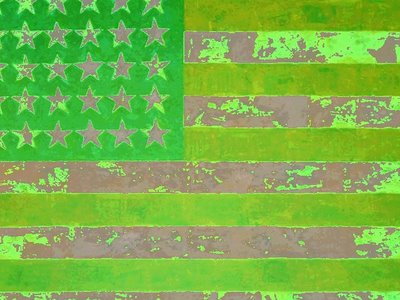RTCA Generator, part 2
I noticed that in certain cases the effect of the program is to mimick the art of the chosen artist, since it multiplies or intensifies the sense of collage already existing in their works. The pop artists are the obvious choices, and we have already seen some of the results for Warhol (8/7/06), but I wanted to go back to early collage pioneers.
Here are a couple Picasso results:

and here's a few for Schwitters:

 Some of the best results came from the affichistes, they of the torn movie posters.
Some of the best results came from the affichistes, they of the torn movie posters.
and this one Jacques de la Villegle:

Moving up in time a bit, we get Rauschenberg of course:

and Johns too:

But most closely mimicked is Rosenquist, because his compositions are based on a grid already:

All of the above obviously suck much of the power from the original works that are in play, but it seems to me that the RTCAG also stumbles upon very evocative compositions that expand that force to some degree. So why is any of this interesting? To me, one of the interesting aspects is the sheer number of physical operations the program performs at the press of a key and ad infinitum, which an artist would be hard pressed to mimic physically with cut papers in any reasonable amount of time. The program, however, uses no "artistic judgment"; rather, it works through an algorithm and achieves what is does by brute force, much like a computer might play chess against a human opponent.
To be continued...
(btw,the latter part of this post was composed while listening to Sparks' This Town Ain't Big Enough for the Both of Us...catchy tune.)


0 Comments:
Post a Comment
<< Home